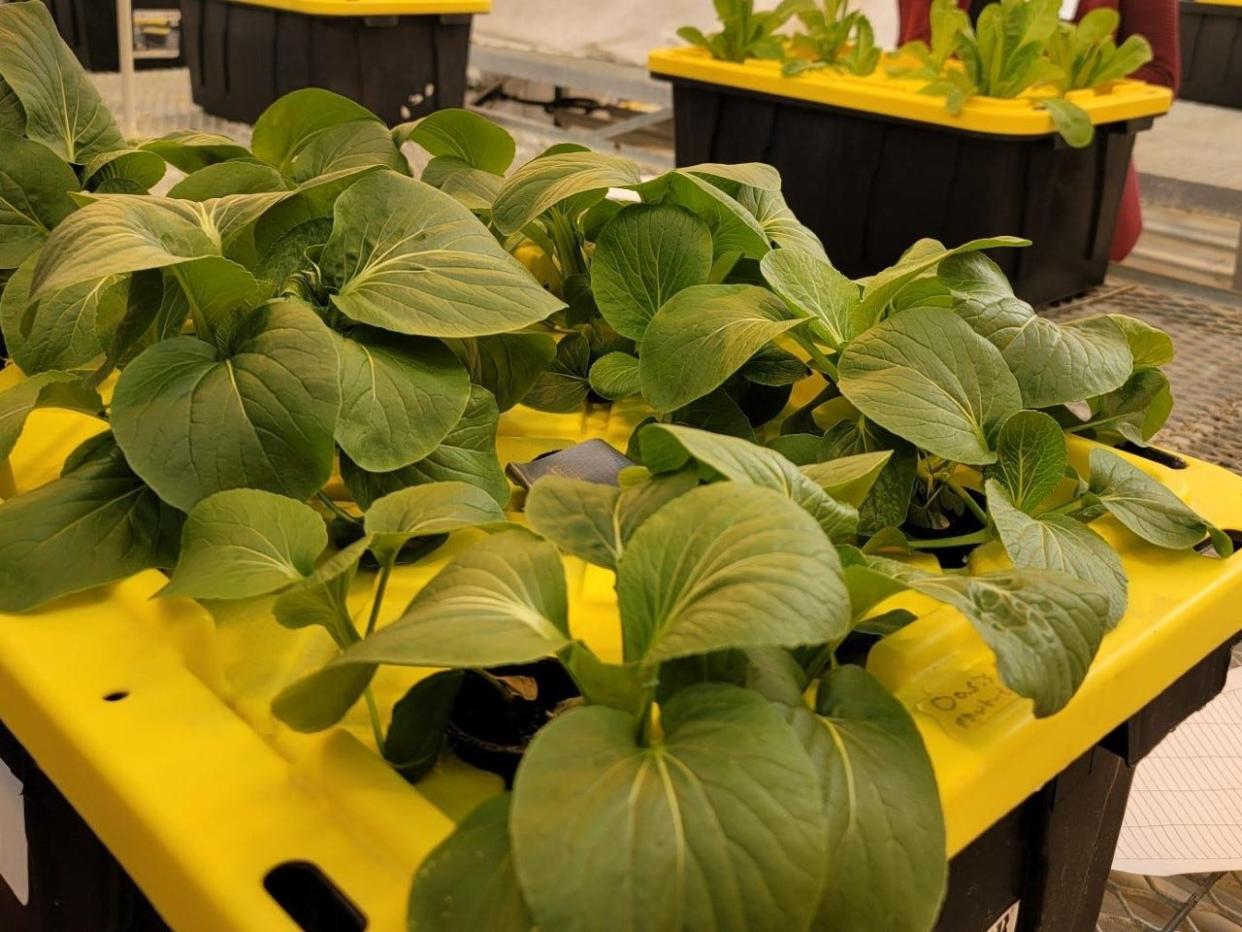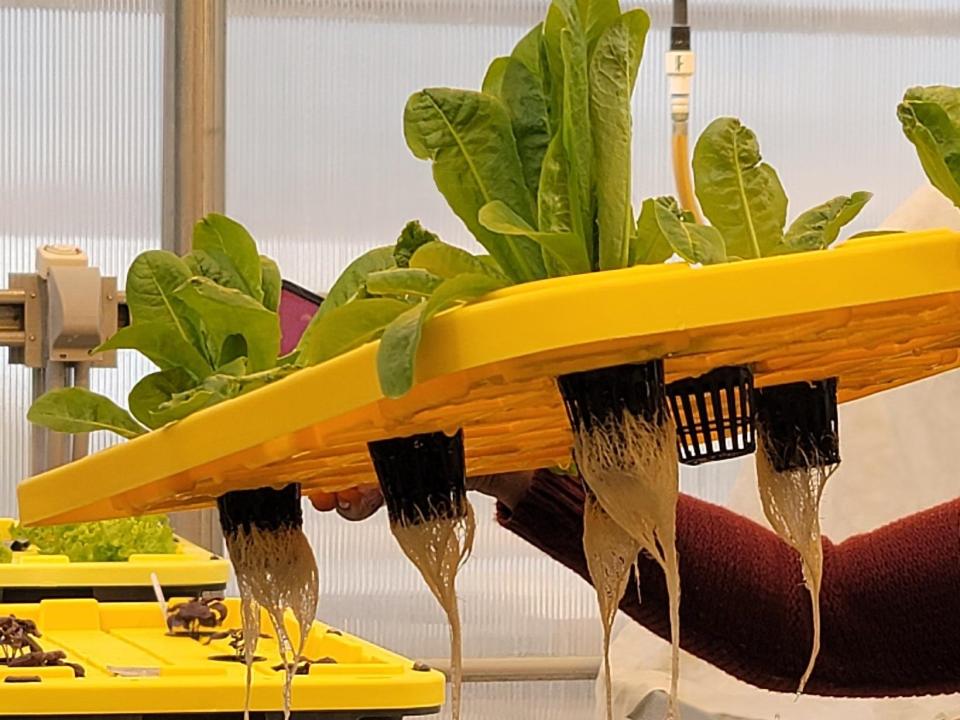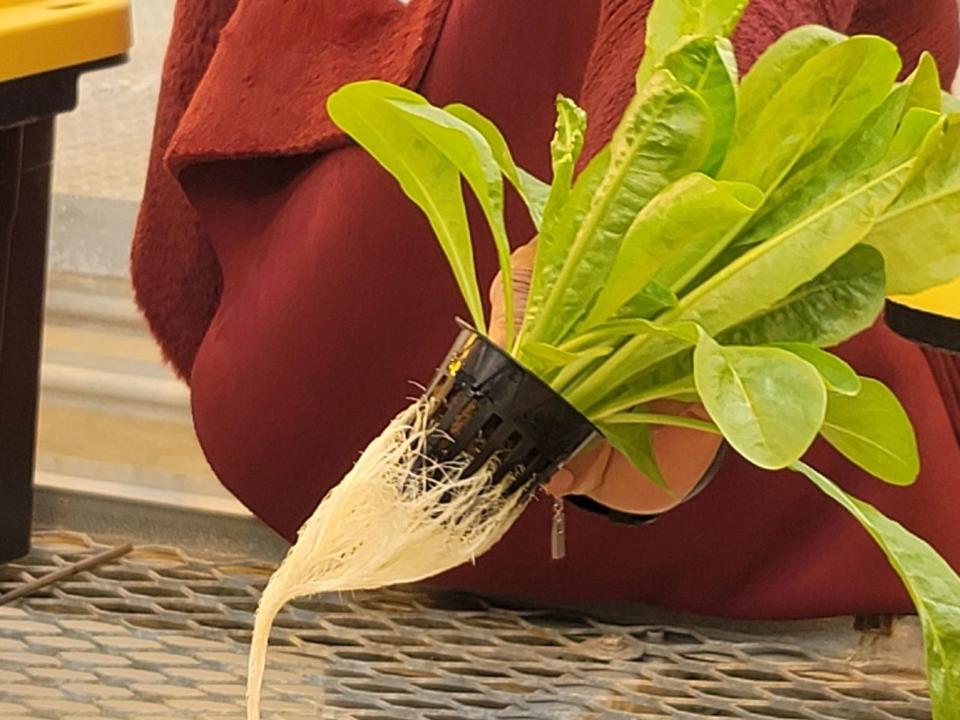Plant Lovers’ Almanac: ‘Tote culture’ offers easy way to grow hydroponic vegetables

I recently had the opportunity to join our Stark County master gardener volunteers on a visit to the Ohio State University Wooster campus student greenhouses.
Our guide, Dr. Uttara Samarakoon, an assistant professor specializing in hydroponics and floriculture, is also the coordinator of the Associate of Applied Degree program in Greenhouse and Nursery Management at OSU’s Agricultural Technical Institute.
More: Plant Lovers' Almanac: There is still time to prepare the garden for winter
While our tour highlighted poinsettia production by the students along with the various areas of Samarakoon’s research, her work on developing sustainable crop production technology for hydroponic vegetables using controlled environment agriculture really resonated with me. One study focuses on what she refers to as “tote culture.” In this study, edible vegetables (mostly leafy greens such as spinach, chard, lettuces) are grown in a hydroponic system using a plastic “tote” with a lid and monitored for pre and post EC (electrical conductivity) and pre and post pH.
Each tote is filled with a mixture of water and liquid fertilizer. The tote lid has six to eight openings that hold a hydroponic growth cup. Vegetable seeds are started in a traditional tray filled with a soilless medium and are transplanted once they have established; or seeds are started directly in a fibrous cube medium within the hydroponic growth cup.

The roots grow through the bottom and sides of the growth cup to reach the water/fertilizer solution. In the study, the totes are placed on a growing table in one of the greenhouses. Shortly, leafy greens emerge, converting carbon dioxide to food for the plant, which in turns produces a tasty green and healthy treat.
This economical and practical option is a great way for the home gardener or classroom teacher and students to learn and experiment with simple hydroponic food production. If you are interested in trying out “tote culture” this winter season, gather the following supplies (listed below) and give it a try!
Supply list
• Plastic tote (Commander XL-17 gallon (16.4 liter)-black with yellow lid: Size for small vegetables
• Liquid fertilizer for hydroponic systems
• pH buffer for hydroponic systems
• Hydroponic grow cups (2 to 3-inch cups depending on diameter of hole cut into lid)
• Seeds: Select types and varieties that grow well in hydroponic environments
• Simple pH meter or testing strips
• Ruler to monitor water level
• Soilless medium and seed starting tray or fiber-based grow cubes (rockwool or stonewool)
• Water
• Light source

For additional resource materials on growing vegetables using simple hydroponic systems, check out the following resources:
University of Minnesota Extension Small-Scale Hydroponics https://extension.umn.edu/how/small-scale-hydroponics#growing-systems-2644460
University of Tennessee Extension-An Introduction to Small-Scale Soilless and Hydroponic Vegetable Production https://extension.tennessee.edu/publications/Documents/W844-A.pdf
Ohio State University Extension-Hydroponic Nutrient Solution for Optimized Greenhouse Tomato Production https://ohioline.osu.edu/factsheet/hyg-1437
To learn more about OSU ATI’s Greenhouse and Nursery Management Program or to reach Samarakoon, visit the following links:
OSU ATI Greenhouse and Nursery Management Program https://ati.osu.edu/greenhouse-nursery-management
Dr. Uttara Samarakoon
https://ati.osu.edu/uttara-samarakoon-phd
Heather Neikirk is a Stark County Extension Educator in agriculture and natural resources for Ohio State University Extension. OSU Extension is the outreach arm of the College of Food, Agriculture and Environmental Sciences with an office in each of Ohio’s 88 counties. If you have questions about healthy food systems, farm to school, food production, small farms, women in agriculture or food gardening, contact her at 234-348-6145 or neikirk.2@osu.edu.
More: Ladybugs, stink bugs move into homes across Ohio to stay warm — how to battle back
More: Plant Lovers' Almanac: A final burst of color as fall gives way to winter
This article originally appeared on Akron Beacon Journal: Plant Lovers’ Almanac: Grow hydroponic vegetables with ‘tote culture’

